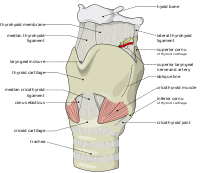
Volume velocity in a canine larynx model using time-resolved tomographic particle image velocimetry
Sign Up to like & getrecommendations! Published in 2020 at "Experiments in Fluids"
DOI: 10.1007/s00348-020-2896-x
Abstract: Abstract In the classic source–filter theory, the source of sound is flow modulation. “Flow” is the flow rate ( Q ) and flow modulation is d Q /d t . Other investigators have argued, using… read more here.
Keywords: larynx model; using time; model using; model ... See more keywords

Volume velocity field and acoustics measurements in a canine larynx model
Sign Up to like & getrecommendations! Published in 2017 at "Journal of the Acoustical Society of America"
DOI: 10.1121/1.5014215
Abstract: In the classic source-filter theory, sound is produced at the glottis by a process known as flow modulation; in this case, “flow” specifically refers to the flow rate (Q) produced at the glottal exit during… read more here.
Keywords: acoustics; larynx model; volume velocity; canine larynx ... See more keywords

The Effectiveness of a 3D Computerized Tutorial to Enhance Learning of the Canine Larynx and Hyoid Apparatus.
Sign Up to like & getrecommendations! Published in 2017 at "Journal of veterinary medical education"
DOI: 10.3138/jvme.0815-139r
Abstract: Teaching the anatomy of the canine larynx and hyoid apparatus is challenging because dissection disassembles and/or damages these structures, making it difficult to understand their three-dimensional (3D) anatomy and spatial interrelationships. This study assessed the… read more here.
Keywords: larynx hyoid; anatomy; hyoid apparatus; computerized tutorial ... See more keywords